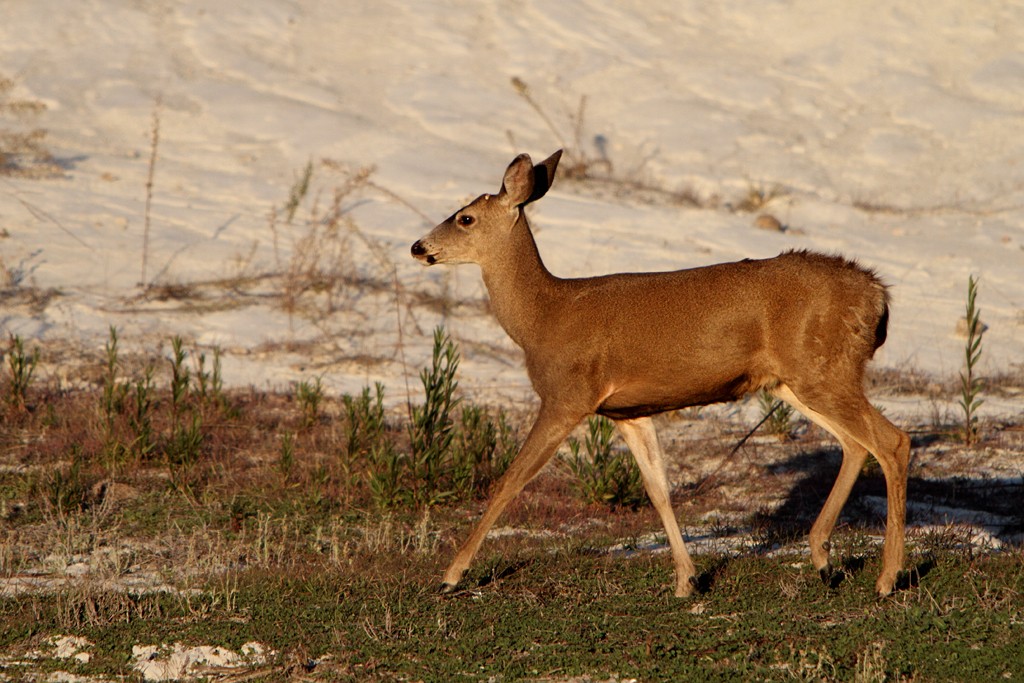California mule deer
A species of Hollow-tooth Scientific name : Odocoileus hemionus californicus Genus : Hollow-tooth
California mule deer, A species of Hollow-tooth
Scientific name: Odocoileus hemionus californicus
Genus: Hollow-tooth
Content
Description General Info
 Photo By Alan Vernon , used under CC-BY-2.0 /Cropped and compressed from original
Photo By Alan Vernon , used under CC-BY-2.0 /Cropped and compressed from original Description
California mule deer demonstrates remarkable adaptations with its selective browsing habits, which facilitate survival in harsh arid habitats by consuming various plant materials deemed non-nutritive for many other species. Furthermore, this creature embodies singular behavioral traits in which larger herbivores do not partake, as it forms monogamous relationships instead adhering to more common polygynous patterns.
General Info
Lifespan
7-10 years
Diet
California mule deer is a herbivore, primarily grazing on fresh and mature grasses. Diversity in its diet is achieved with the inclusion of herbs, shrubs, berries, and seasonal fruits, facilitating its adaptation to various habitats.
Appearance
The california mule deer is a medium-sized deer with a slender, agile body enveloped in a coat of light brown or gray fur. Its underside and rump are distinctly white. Notable among its features is a black-tipped tail. Mature males, or bucks, have antlers that annually shed and regrow. The california mule deer is distinguished by its large ears, reminiscent of mule's ears, earning it a common nickname.
Behavior
California mule deer is predominantly crepuscular, engaging in foraging activities at dawn and dusk. Solitary in nature, it communicates via scents and foot-stomps, and maintains territories year-round. Known for its heightened alertness, california mule deer quickly escapes potential danger with remarkable agility and speed, adeptly navigating its forest and brushland habitats.